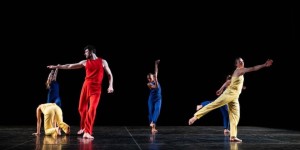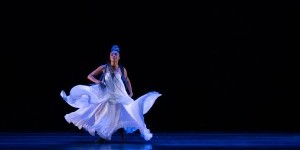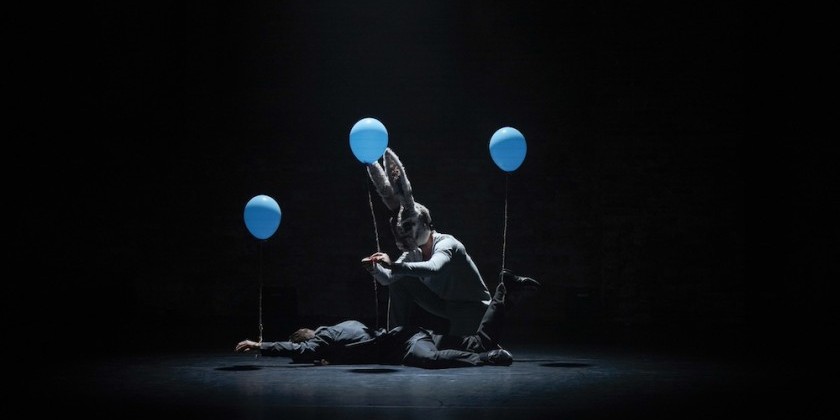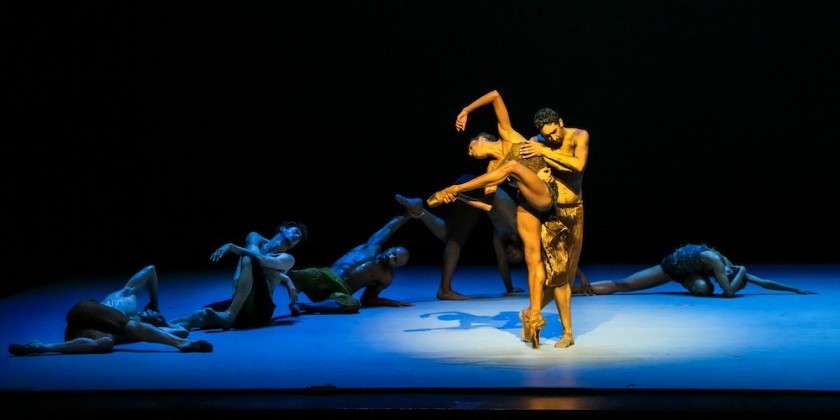Impressions of Alonzo King LINES Ballet at The Joyce
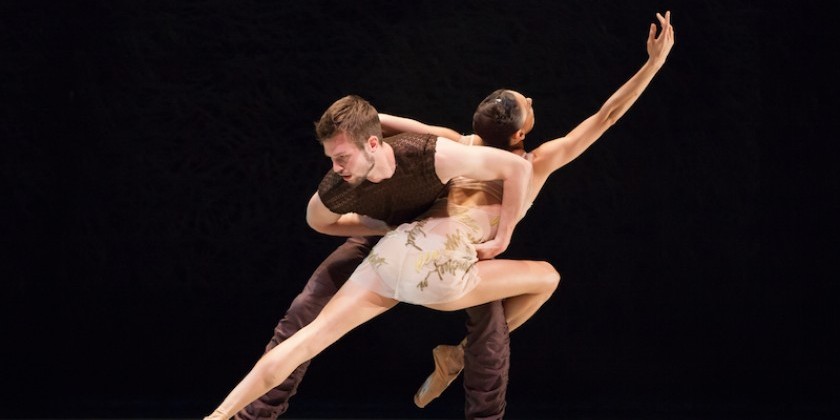
The Joyce, May 5-10
Choreography by Alonzo King
Dance Performance by Alonzo King LINES Ballet
Lighting Design by Axel Morgenthaler
Set and Costume Design by Robert Rosenwasser
“Concerto for Two Violins”
Music by Johann Sebastian Bach
“Men’s Quintet”
Music by Edgar Meyer and Pharaoh Sanders
“Writing Ground”
Music by Jordi Savall, Le Royaume Oublie, Marcel Peres & Sacred Music Ensemble Organum, Academy of Ancient Music & Andrew Manze, Richard Kaplan, Kathleen Battle, and Lama Gyurme & Jean-Philippe Rykiel
Photo above: Alonzo King LINES Ballet dancers Robb Beresford and Kara Wilkes perform in Writing Ground, photo by Margo Moritz
Alonzo King has an opinion, a strong one, of what dance should, and should not, be. Dance should be briskly paced, vigorous, and brimming with whiz-bang extensions, turns, and leaps. Men should be lithe hunks while women should be leggy and pliable. Everyone should perform as if his or her life depends on it. Dance should have commotion, sensationalism, and intensity; stillness and subtlety may be perceived as boring and should be avoided. When it works, his opinion thrills with visceral bravura.
King’s domain is contemporary ballet, a slippery term that evades a pat definition. Using elasticity and torque as his tools, he yanks and twists ballet’s rigid academicism into something deliciously unstable. In the three pieces showcased at The Joyce, everything is tilted and tweaked. Wrists flip. Necks flick. Arabesques tip. Spins slide into squats. This is ballet on Red Bull.
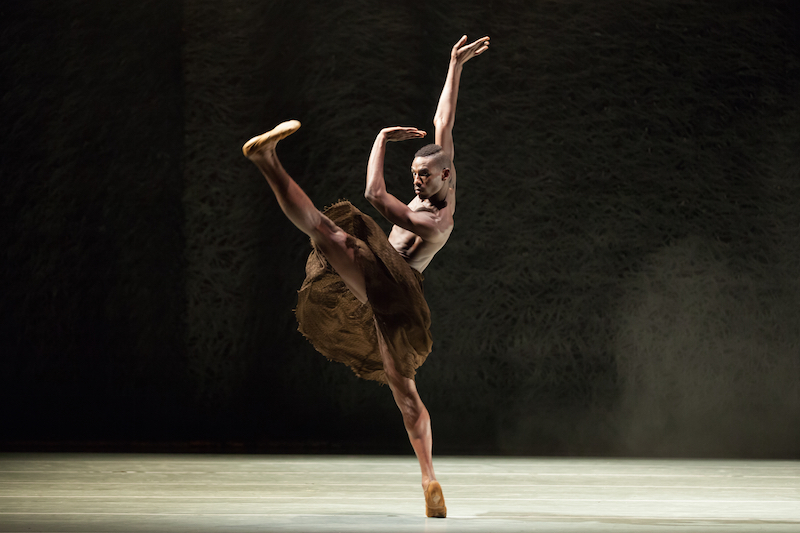
Alonzo King LINES Ballet dancer Jeffrey Van Sciver performs in Writing Ground, photo by Margo Moritz
Bach’s music — crystalline yet marvelously accommodating — remains resonant against the beeping, buzzing backdrop of modern life. As such, two 20th century dance masters have used the delicately shaded "Double Violin Concerto in D Minor” for canonical works: George Balanchine’s Concerto Barocco and Paul Taylor’s Esplanade. With Concerto for Two Violins, King makes a bid to join these rarefied ranks.
Unlike the cool refinement of Concerto Barocco or the affable perambulations of Esplanade, Concerto for Two Violins swarms with high-octane shenanigans for a horde of showboating dancers. The best section, “Largo,” features King in conversation with choreographic ghosts. A quartet of dancers quotes Balanchine’s daisy chain but with a wriggling, menacing interpretation. When the women melt yieldingly into their male partners, it reads as a nod to Taylor’s casual tenderness.
"Men’s Quintet," an excerpt from The Radius of Convergence, features Michael Montgomery, spry and not too hammy, against four men. To Edgar Meyer and Pharaoh Sanders’ schmaltzy “Violin Concerto Movement II,” Montgomery extends into full layouts and swivels through splashy pirouettes while the quartet peacocks behind him like highbrow Chippendales. Divorced from its whole, “Men’s Quintet” operates as nothing more than an occasion to gawk at shirtless beefcakes.
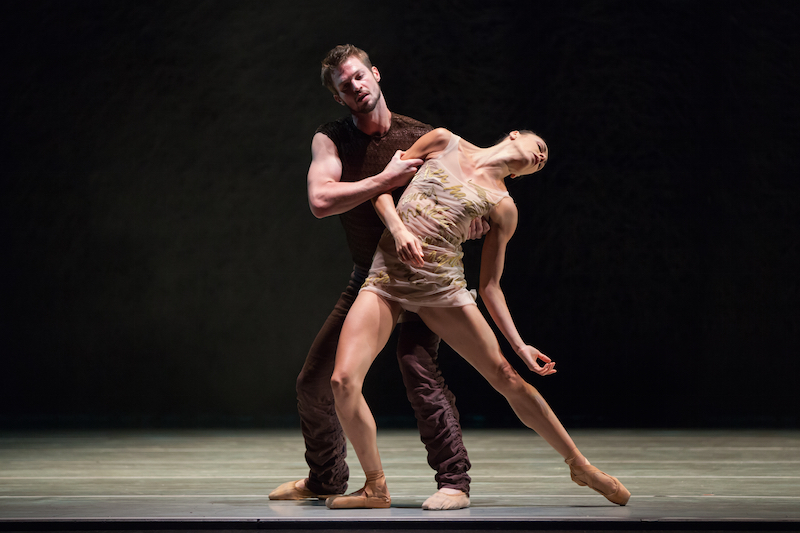
Alonzo King LINES Ballet dancers Robb Beresford and Kara Wilkes perform in Writing Ground, photo by Margo Moritz
Created in collaboration with award-winning author Colum McCann, Writing Ground highlights sacred music from the Christian, Jewish, Muslim, and Tibetan Buddhist traditions. In theory, it’s fourteen separate vignettes of duos, small groups, and large crowds; in reality, it’s a ceaseless gush of images and archetypes that reflect humanity’s common mythology.
When the company sweeps across the stage, it evokes a religious pilgrimage of the poor, the sick, the holy, the opportunistic. Babatunji, all wheeling limbs and impassioned fervor, practices the fanaticism of a flagellant while Montgomery’s undulating spine and snaky arms capture the ornate swirl of a many-armed Hindu deity. In the last and most sublime scenario, Kara Wilkes, a soiled angel of sorts, stumbles and pleads before crumpling, remorseful, to the ground. Etched against Robert Rosenwasser’s backdrop of twiggy sheets, the dancers’ gesticulations in the flickering lights bring to mind cave paintings or pottery etchings.
The tempo and tenor of Writing Ground maintain a relentless intensity. With no quiet reposes and no epic climaxes, the work never becomes the meditation the music promises, and this speaks to the larger issue with King’s fast and furious approach. He’s fantastically innovative with more ideas than he could ever flesh out. Yet, by prizing content over sentiment — the what over the why — he leaves no place for us to commune with the dance.






